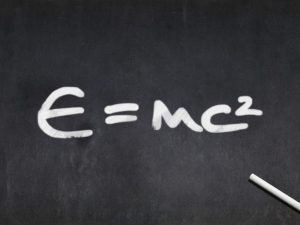 “Einstein” – the name that conjures up images of an unkempt head of hair, a smoking pipe, one of the greatest scientists of all time, E=mc2, Nobel laureate, one of the founders of quantum theory albeit a reluctant one (“God doesn’t play dice”), and inventor. Yes! Along with Leo Szilard, he invented and patented a refrigerator that does not consume electricity.
“Einstein” – the name that conjures up images of an unkempt head of hair, a smoking pipe, one of the greatest scientists of all time, E=mc2, Nobel laureate, one of the founders of quantum theory albeit a reluctant one (“God doesn’t play dice”), and inventor. Yes! Along with Leo Szilard, he invented and patented a refrigerator that does not consume electricity.
But that is not what this article is about. Let me explain. The name Einstein, when split and translated from German, means one stone. (Ein = one, Stein = stone). This name is given to a tile, as in, say, a floor tile, which can be assembled to cover a flat surface such that its pattern never repeats itself.
Two tiles of different shapes which can be used to cover a flat surface without the pattern repeating have been known. This is called aperiodic tiling. Penrose tiles(*) are an example of tiles that enable aperiodic tiling. This subject has fascinated mathematicians for a long time. They, however, did not know if a single shape existed that could be used for aperiodic tiling. Now, such a shape has, in fact, been found – more than one in fact.
A quartet of characters are behind this discovery of the first such shape. David Smith, an amateur mathematician, discovered a shape and found that it and its mirror image could be used to tile a flat surface with a non-repeating pattern. He alerted Craig S. Kaplan, a mathematician, a computer scientist, and a mathematical artist at the University of Waterloo, Canada, about his discovery. They named the tile a hat because of its resemblance to a fedora. This tile comes with the condition that the tile and its mirror image are needed to cover the plane surface.
Kaplan got the help of Joseph Samuel Myers, a software developer from Cambridge University and Chaim Goodman-Strauss of the University of Arkansas to mathematically prove that the tiling gives rise to a non-repeating pattern. Smith, in the meantime, found another shape that he called “the turtle” that did not need its mirror image to create a non-repeatable pattern. In a paper published in March 2023, the team proved that the hat and its mirror image, as well as the turtle alone, give rise to a non-repeating pattern of tiling.
In the paper, they wrote that a tile has “enough complexity to forcibly disrupt periodic order at all scales,” Further, they realised that the hat is one of infinitely many different tiles of this type. The interesting thing is that after the discovery, mathematicians realised that such shapes have been in plain sight but hiding and have already found many such shapes.
Advances in tiling theory have been used in other sciences, such as physics, chemistry, and engineering. One of the more famous instances was the application of Penrose tilings to quasicrystals. Kaplan says, therefore, that while there is no immediate application identified to the new tiles, we may see interesting connections popping up as more researchers work with them.
However, some people have used the Einstein tile in games and puzzles, such as jigsaw puzzles. Smith has not sought any IP protection on his tiles. In an interview, he said that he wants it to go out into the world and wants to see how it will be used. With an obvious reference to the case of Penrose tile and toilet paper case (*), Smith is reported to have said, “I feel the opposite. I would be flattered to see this design appear on toilet paper, and I’m putting that out there for the record.” However, he has also admitted that he feels melancholic – like a father seeing his children go out into the world by themselves. Hopefully, these “children” do spawn some exciting new applications.
Please see this for a GIF showing the various shapes the hat can take.
Author: J L Anil Kumar
First Published By: Lexology Here



